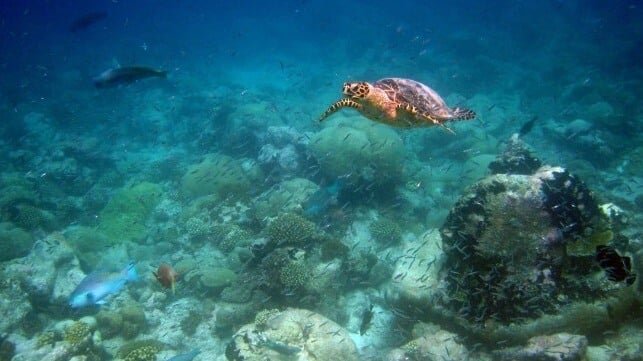The Value of Very Large Marine Protected Areas in Biodiversity Conservation
The global initiative to protect 30% of the world’s oceans by 2030 has led to a renewed focus on establishing marine protected areas (MPAs) by governments worldwide. While the effectiveness of MPAs has been a subject of debate, recent studies are shedding light on the significant benefits of very large MPAs (VLMPAs) in conserving marine biodiversity.
A study published in 2023 highlighted that 27% of MPAs worldwide could be classified as ‘paper parks,’ meaning they are legally designated but fall short in achieving conservation goals. On the contrary, a new study conducted by researchers from Exeter and Heriot-Watt universities in the UK, along with the Zoological Society of London, emphasized the positive impact of VLMPAs in protecting large migratory ocean animals.
The study focused on the Chagos Archipelago MPA in the Indian Ocean, designated in 2010 and spanning 640,000 square kilometers. This vast MPA encompasses the world’s largest contiguous undamaged reef area, seamounts, and open ocean regions, making it a biodiversity hotspot.
Tracking hawkbill turtles, reef manta rays, and seabird species within the Chagos MPA revealed that 95% of their locations were recorded inside the protected area. This demonstrates the effectiveness of VLMPAs in safeguarding wandering marine species that rely on large habitats for foraging, breeding, and migration.
Comparative analysis with a hypothetical smaller MPA (less than 100,000 km2) showed that while a significant portion of manta rays and turtles would still be protected, only 59% of seabird locations would fall within the smaller MPA due to their extensive range of movement.
Dr. Alice Trevail, lead researcher from the University of Exeter, emphasized the importance of VLMPAs like the Chagos Archipelago in protecting diverse marine species. The impending change in sovereignty of the Chagos Archipelago underscores the value of preserving the entire MPA post-transition to Mauritius.
Dr. Ruth Dunn from Heriot-Watt University highlighted the groundbreaking insights provided by the study, emphasizing the need to prioritize VLMPAs for long-term protection and the survival of marine biodiversity.
Overall, the research underscores the critical role of very large marine protected areas in conserving marine biodiversity and calls for continued efforts to establish and maintain such areas to safeguard our oceans for future generations.

